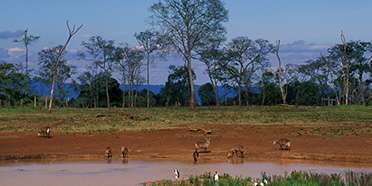
Safari Tours to Aberdare NP
-
![7-Day Nairobi/Aberdare/Bogoria/Naivasha and Masai Mara]()
7-Day Nairobi/Aberdare/Bogoria/Naivasha and Masai Mara
$2,168 to $2,234 pp (USD)
Kenya: Private tour
Mid-range Lodge & Tented CampYou Visit: Nairobi (Start), Giraffe Centre (Nairobi), Aberdare NP, Lake Bogoria NR, Lake Naivasha (Naivasha), Masai Mara NR, Nairobi Airport (End)

Keshi Tours
5.0/5 – 46 Reviews
-
![10-Day Samburu, Amboseli, Nakuru, Maasai Mara, Naivasha]()
10-Day Samburu, Amboseli, Nakuru, Maasai Mara, Naivasha
$3,198 to $3,988 pp (USD)
Kenya: Private tour
Mid-range Lodge & Tented CampYou Visit: Nairobi (Start), Samburu NR, Aberdare NP, Lake Nakuru NP, Masai Mara NR, Lake Naivasha (Naivasha), Amboseli NP, Nairobi Airport (End)

Cherish Africa Safaris
4.9/5 – 10 Reviews
-
![7-Day Off the Beaten Path - Luxury]()
7-Day Off the Beaten Path - Luxury
$2,750 to $3,190 pp (USD)
Kenya: Private tourLuxuryLodge & Tented Camp
You Visit: Nairobi (Start), Masai Mara NR, Lake Nakuru NP, Aberdare NP, Samburu NR, Nairobi (End)

Spirit of Kenya
5.0/5 – 560 Reviews

 Kenya Parks
Kenya Parks






_4485_5e46fe3202424.gif)



